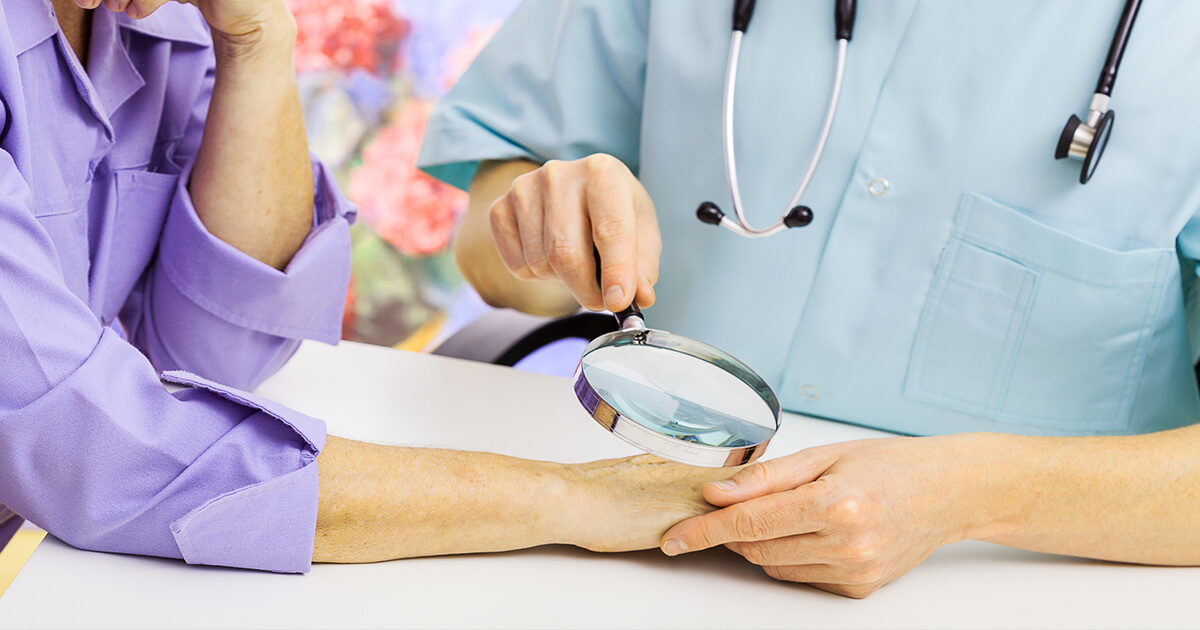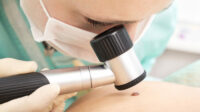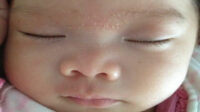Gearing up for the Dermatology boards? Start your prep on the right foot and test your knowledge with these free sample Dermatology questions from the BoardVitals Dermatology question bank.
Sample Dermatology Board Questions
Question 1. Rheumatic and Systemic Disease QID 32790
A 32 year-old male presents to your clinic complaining of intense burning and pain with associated redness of the ear, and denies any history of trauma. A physical exam of the ears demonstrates tender erythema with sparing of the ear lobes. You discuss with your patient what you believe is the diagnosis, and he is concerned about serious complications both short and long term. Which of the following is the most serious complication of your diagnosis?
A. Saddle nose deformity
B. Compromised hearing
C. Respiratory tract compromise
D. Arthritis
E. Ocular inflammation
Answer: C. Respiratory tract compromise.
Explanation:
Involvement of the respiratory tract cartilage, with or without costochondral joint involvement is the most serious complication of relapsing polychondritis (RPC). An inflammatory attack on collagen type II will involve the respiratory tract in 50% of patients. Signs of involvement include choking, cough, dyspnea, hoarseness, wheezing or tenderness to the anterior aspect of the neck at the site of the larynx or trachea. Potentially serious outcomes such as airway obstruction or collapse should be frequently screened for in these patients.
Nasal cartilage (Choice A) inflammation is present in up to 70% of patients with RPC, and can lead to saddle nose deformity. Signs of nasal cartilage involvement include rhinorrhea, crusting, congestion, pain, and epistaxis. Long term complications may lead to decreases sensation in smell and deformity. Inflammation of the auricle can lead to significant swelling and this may approach the external auditory meatus causing compromised hearing (Choice B).
Arthritis (Choice D) is present in 50-80% of patients with RPC and presents as a non-symmetric, non-erosive arthritis of multiple joints, often affecting the MCP, PIP, and knees. Cartilaginous areas of the chest wall can also be affected such as the sternoclavicular and sternomanubrial joints.
Ocular inflammation (Choice E) is common and present in up to 65% of RPC patients. The inflammation can involve all anatomic parts of the eye leading to optic neuritis, conjunctivitis, uveitis, and corneal ulcerations.
Reference: Bologna 3rd Edition, Chapter 45 page 676
Question 2. Dermatopathology QID 20643
This patient likely overused which of the following topical medications:

A. Hydroquinone
B. Silver nitrate
C. Dihidroxyacetone
D. Erythromycin
E. Propylene glycol
Answer: B. Silver nitrate.
Explanation:
This is a histological image of argyria, a gray discoloration of the skin due to deposition of silver, either from systemic ingestion of a silver medication or topical overuse of a silver containing medication. Uniform small black particles are found around eccrine glands, hair follicles and blood vessels.
Overuse of hydroquinone can lead to ochronosis, which histologically appears as ‘brown bananas’ (see below).
Dihidryoxyacetone is the agent in self-tanners, and it acts only on the stratum corneum.
Use of erythromycin or propylene glycol would not lead to such a condition.

Looking for more ways to study before test day? The BoardVitals Dermatology Question Bank contains more than 1,000 questions targeted to the exam content outline for the American Board of Dermatology’s (ABD) BASIC, CORE, and APPLIED exams. Sign up for a free trial today!.




